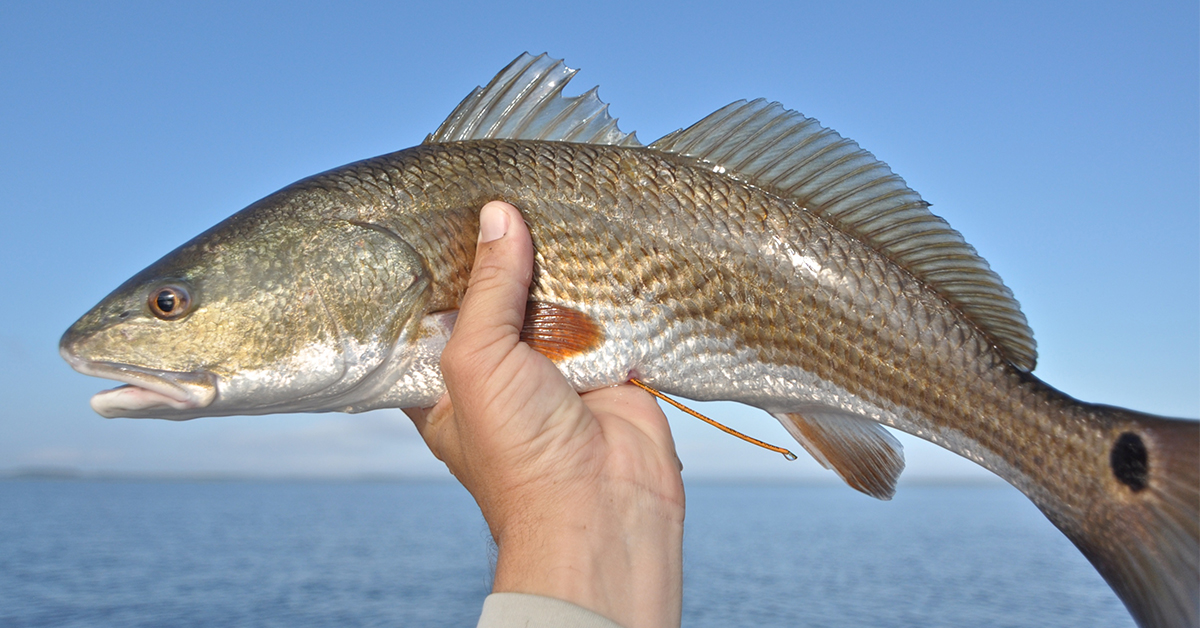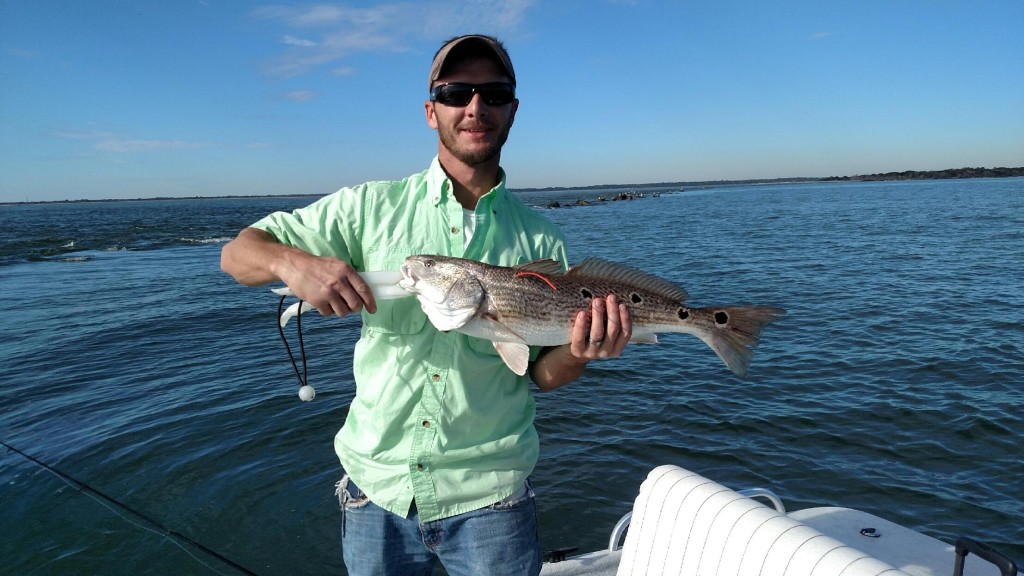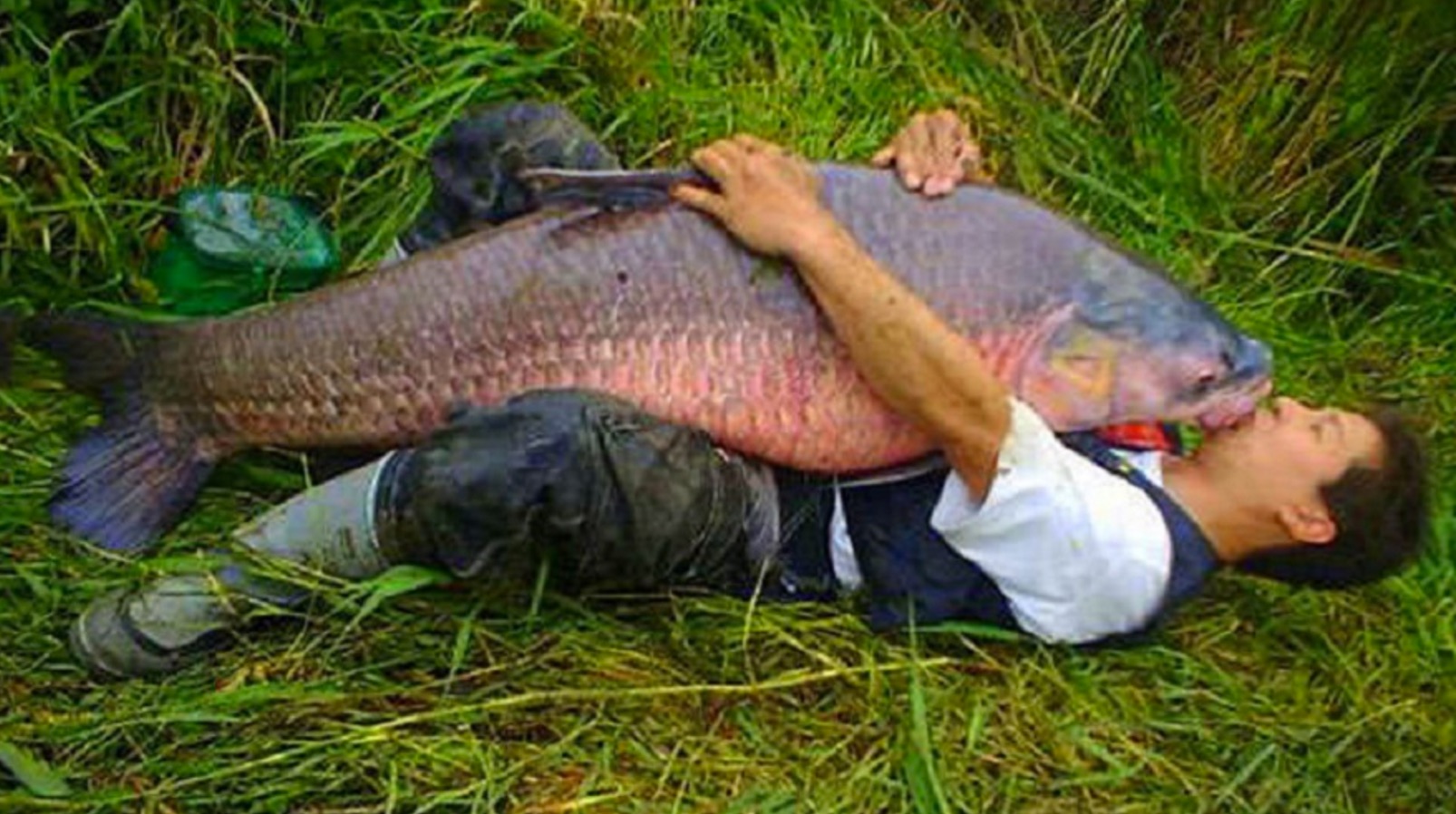What Should You Do If You Catch A Tagged Saltwater Fish?
- By: Joseph Simonds
- on
- Found In: Fishing News, Fishing Tips

Ever caught a tagged saltwater fish?
Did you know exactly what to do?
And if you haven’t caught a tagged fish yet, but caught your first one tomorrow, would you know the appropriate steps?
I’m guessing most of us don’t know exactly what to do based on some of the different feedback I saw online recently.
A few weeks ago, someone posted the question in our private Salt Strong Facebook Group asking what they were supposed to do with a tagged redfish they caught.
And after seeing all of the different answers, I wanted to do some investigating to see exactly what the wildlife and state groups that administer the tagging of fish really want you to do.
Here is what I found (I’ve also listed what to do with a tagged fish in a handful of specific states):

What To Do With A Tagged Fish
Depending on where you are in the country, there are different types of tagged saltwater fish.
The vast majority of the tags are the property of your state’s wildlife commission. In these instances, biologists are using the tags to learn more about the fish’s history, biology, mating, travel, etc.
However, it is also possible to find tagged fish from specific tournaments (like the big CCA fishing tournaments where tagged fish can win you boats, trucks, etc), and there are also cash prize tags from the states as well.
Here are a few ground rules that pretty much apply to all tagged saltwater fish:
- Take note of the TAG number. This refers to the fish’s identification number; therefore, it is really important to have the accurate number. The best thing to do is a get a close-up picture of the tag number using your phone.
- Measure the fish and take a picture (if possible). Measure the fish’s length (including its total length and fork length). Should you not have a measuring device, resourcefulness can do wonders until you can get back to the dock where you can measure your rod or whatever else you might use to get a temporary measurement.
- Release or Return. You have two choices when you catch a tagged saltwater fish. Either release the fish safely with the tag intact after getting the proper measurements and tag number, or return the tag to the appropriate tag owner after you harvest the fish (clearly, normal bag limits still apply to a tagged fish).
Some notes on getting measurements for a tagged fish what will be released:

- Preferably use wet hands to handle the fish, get your measurement, and then get it back in the water as quickly as possible.
- Don’t pull a tape measure over the fish. Instead, lay the fish down on top of a ruler or tape measure. All measurements should start at the tip of the snout, but where to end depends on what type of measurement you’re taking (i.e. standard, total or fork length).
- Standard length: From the tip of the snout to the end of the fleshy part of the tail
- Total length: From the tip of the snout to the end of tail fin
- Fork length: From the tip of the snout to the fork of the tail
Related Post: “How To Properly Release Fish Without Killing Them” (see it here now)
- Record some pertinent details for references. Write down the angler’s personal details, the time and date, the exact location, and even how the fish was caught as well as the tackle, tool or gear used.
- Observe your catch. Write down any other information about the fish that you think could be useful.
For example:
- Was the fish kept or released?
- Are there any unusual markings, scars, or fresh wounds to the fish?
- What is the fish’s overall appearance and current condition?
- What did you do with the tag (removed it or left it on the fish)?
- Contact the agency listed on the tag. Prepare the said details at hand and wait for further advice or instructions from the concerned agency. Some institutions even offer rewards for getting involved with such tagging programs.
Important Note: The Department of Natural Resources (DNR) urges everyone NOT to tag fish in public waters for this may not just cause confusion among anglers and organizations but most significantly, can result in the death of the fish, which we all not want to happen.
So folks, please bear this in mind: No Personal Tagging!
Do you want to catch More Redfish in Less Time without having to use live bait?
Then click here now to see if you are a fit for the “Inshore Slammer Course”
Saltwater Tagging Rules In Certain States
Here are the rules from a few key states regarding tagged fish.
Louisiana

The Louisiana Department of Wildlife and Fisheries encourages all recreational anglers to cooperate with the agency if you come across a tagged fish. Here is what they recommend you do with any tagged fish:
- Record:
- the tag number,
- the time you caught the fish,
- the bait used,
- the date,
- time and location,
- the description,
- and the overall health appearance of the fish.
- Call 1.800.567.2182 to forward the said information as soon as possible (bonus: you might receive a reward depending on the fish).
- Release the fish with the tag still intact if under/over size.
Florida

If you happen to catch a tagged fish in Florida waters, you may contact its Angler Tag Return Hotline at 1-800-367-4461 and have ready the following information:
- Tag number
- Fish species, length, and weight
- Specific catch location, time, and date
- Any unusual circumstances regarding the catch
It is important that you still report a tagged fish whether you intend to keep it, discard it dead, or release it alive. Should you decide to free the tagged fish, please do NOT remove the streamer tag as recapturing of the same fish is actually common. Hence, if you really wish to harvest your catch, please return the tag to FWC:
Florida Stock Enhancement Research Facility
- Angler Tag Return Hotline
1-800-367-4461 - tagreturn@MyFWC.com
- Mailing address:
Stock Enhancement Research Facility
14495 Harllee Road
Port Manatee, FL 34221
Virginia

Through its Virginia Saltwater Fishing Tournament office and the Virginia Institute of Marine Science, Virginia Marine Resources Commission’s game fish tagging program promotes the involvement of recreational angling in the conservation and management of marine finfish.
Currently targeted for tagging include red drum, black drum, cobia, flounder, speckled trout, black sea bass, tautog, spadefish, sheepshead, and gray triggerfish.
And in case, you caught any of them, report it right away to VMRC with the necessary details: tag number, fish species, length and weight, location, time and date, as well as any other information that you think are necessary.
Should you decide to participate in this endeavor, you may have the opportunity to earn recognition for your conservation efforts, receive certificates and even trophies.
FOR MORE INFORMATION CONTACT:
Virginia Saltwater Fishing Tournament
Virginia Gamefish Tagging Program
Attn: Lewis Gillingham
2600 Washington Ave, 3rd Floor
Newport News, VA 23607
(757) 491 – 5160
(757) 247-8014 (fax)
vswft@mrc.virginia.gov
North Carolina

Anglers in this State who catch a striped bass with a red or yellow tag during their fishing trips must find time to report it to N.C. Wildlife Resources Commission at 919-707-0010 or 1-800-682-2632.
Before making a report, be sure that you took note of the tag number, the time you caught the fish, the gear or tool used, the date, time and location, and the overall manifestation of the fish.
By doing this, you enable to participate in research projects that help marine and wildlife biologists manage North Carolina’s striped bass populations and mortality rates.
Texas

With specially marked tags in the abdomen area, the red drum, spotted seatrout, black drum, tarpon, snook, flounder and sheepshead along the Texas coast are periodically tagged by the Coastal Fisheries Division.
A bright yellow tube juts from the abdomen with black numbers and letters. Attached to this is a bright red plastic tag with identical wording and tag number.
Authorities highly recommend that commercial and recreational anglers should be alert and always examine their catch. They also advised that if a tagged fish is caught and it is under or over the legal limit, the tag number on the tube should be recorded.
The fisherman must then return the fish to the water alive the soonest time possible. Hence, if he decides to keep the fish, the yellow tube and the red tag can be retained once the fish is cleaned.
Contact Texas Parks and Wildlife Department’s toll-free number at 1-800-792-1112. The following details are needed in your report:
- Name of the angler
- Address and contact number
- Species: Black drum or Red drum (?)
- Tag Number (usually begin with an F or X with 5 digit numbers following)
- Date Caught Fish
- Location of Catch
- Total Length and Weight
Meanwhile, the angler can also report the tag to the local coastal fisheries office located in Port Arthur, Seabrook, Palacios, Port O’Connor, Rockport, Corpus Christi, or Brownsville.
Adopt A Tagged Fish?

Adopt an Electronically Tagged Fish? Why Not?
Yale Environment 360 recently reported that certain “new advances in technology” are currently being initiated to utilize Virtual Reality (VR) in educating people about genuinely appreciating nature’s gifts and lending a hand to deal with environmental challenges, thus working together to preserve it for the next generation.
According to the report, Stanford Woods Institute for the Environment has sponsored a “fish avatar project” that is being developed in its Virtual Human Interaction Lab (VHIL). Its collaborators from the Goldbogen lab will construct and implement underwater tracking sensors, while also building the software to display fish avatars.
The said initiative is aimed to take movement data from electronically tagged fish in the kelp forests of Monterey Bay and transfer it into a virtual reality where people can enter the underwater realm to observe virtual versions of live fish.
The primary target of this project is to allow individuals to “adopt a fish,” (at least, virtually) — becoming more concerned about the bay’s future.
What do you think? Let us know in the comments.
Conclusion
Participating in tagging programs by simply reporting your marked catch may mean a lot to the agency as well as to the scientists who are monitoring the fish population and observing the migratory habits of these tagged fish.
Likewise, anglers’ coordination is highly encouraged as the data found on the fish tags also play a vital role to most marine researchers who study the lives and habits of these fish species.
Although you can certainly keep any legal tagged fish for dinner, we highly encourage anyone that catches a tagged fish to release it so the agencies can continue to monitor and track them.
It might mean less fish meat for a day, but it could tremendously help the fisheries in the long run if all anglers practiced catch and release of tagged fish.
Fish On!
P.S. – If you think your angler friends or fishing networks would enjoy seeing this, please Tag them or Share this with them. You Rock! Pa-POW!
P.P.S. Get a new fishing tip every week by joining the FREE “Salt Strong” newsletter by clicking here now.
Do you want to catch More Redfish in Less Time without having to use live bait?
Then click here now to see if you are a fit for the “Inshore Slammer Course”
Related categories:
STOP WASTING TIME ON THE WATER!
Do what the “SMART ANGLERS” are doing and join the Insider Club.
Here’s what you’ll receive today when you join:
- Weekly fishing reports and TRENDS revealing exactly where you should fish every trip
- Weekly “spot dissection” videos that walk you through all the best spots in your area
- Exclusive fishing tips from the PROS you can’t find anywhere else
- Everything you need to start catching fish more consistently (regardless if you fish out of a boat, kayak, or land).









Did anything ever happen with the project? Googled and couldn’t find more information. TIA